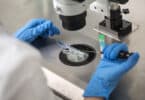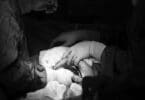For some time now, doctors have been freezing the ovarian tissue of young girls undergoing chemotherapy or radiation. The hope has been that the frozen tissue could restore fertility if lost. Unfortunately, it hasn’t been done long enough to have very many positive results to determine if the treatment is, in fact, effective. But there are a few cases out there. The most recent comes from Belgium.
The woman, who has not been named, had one of her ovaries removed at the age of 13 because she was about to undergo a bone marrow transplant that would likely leave her infertile. She hadn’t started menstruating yet, so the tissue was immature, but doctors hoped for the best.
A decade later, she requested they transplant some of that ovary. Doctors placed four fragments of the frozen sample onto her remaining ovary. Five months later, she started menstruating. Two years later, she became pregnant. November 2014, she gave birth to a healthy baby boy weighing 6 pounds, 9 ounces.
“This is an important breakthrough,” Dr. Isabelle Demeestere, a fertility specialist at the University Libre de Bruxelles, Brussels, told News Sky. “When [children] are diagnosed with diseases that require treatment that can destroy ovarian function, freezing ovarian tissue is the only available option for preserving their fertility.”
Doctors say the woman’s ovaries continue to function normally, and that there is no reason she can’t conceive again, if she wants to grow her family. They also say that a further transplant could be done in the future, should the existing tissue stop functioning as it should.
“There had previously been uncertainty as to whether ovarian tissue taken from young girls would later on be competent to produce mature, fertile eggs, so today’s case is both reassuring and exciting,” Adam Balen, Professor of Reproductive Medicine and Surgery at the Leeds Centre for Reproductive Medicine told Sky News.
But this amazing news comes with a word of caution: the procedure is invasive and it comes with risks, especially for young girls that are already have compromised immune systems.
“We have to remember that many children who require chemotherapy are very ill and the surgery to remove ovarian tissue is no small undertaking,” Balen said. “Furthermore, there are only a few centers where the technology is available and this sort of treatment is achievable. In years to come, it will no doubt become more routine.”
Related Articles:







